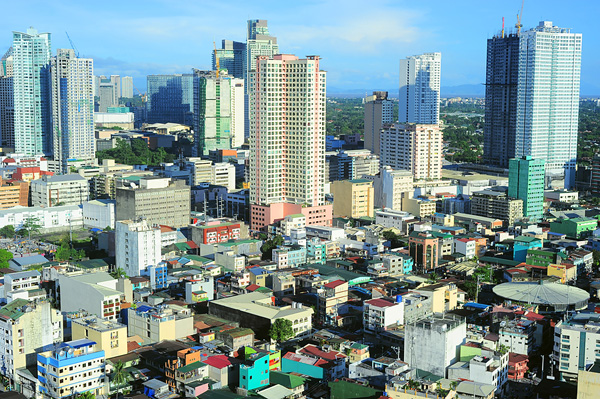Public Transportation in Makati City
Summary: Learning how to get around using public transportation in Makati City is an important step in adjusting to life in Makati City. In this article, we cover the local public transportation options.

Makati City, known as the financial center of the Philippines, is a bustling metropolis teeming with business opportunities, cultural experiences, and a vibrant social scene. For digital nomads who have chosen Makati as their temporary base, navigating the city efficiently is crucial. Public transportation is varied and can be convenient, offering several options to get around. Understanding these options will help you save time and money while exploring the city and its surroundings.
Jeepneys
Jeepneys are an iconic form of transportation in the Philippines, and Makati is no exception. These colorful, decorated vehicles are a cheap way to travel short distances within the city. Digital nomads will find that jeepneys often pass through major roads and commercial areas, making them a convenient option for getting around. However, it's important to be aware of the specific routes and destinations, as jeepney travel can be confusing for newcomers. For the latest information on routes, you can visit the official Makati City website or ask locals for guidance.
Buses
Buses in Makati are a reliable option for longer distances and are especially useful for traveling to and from neighboring cities. The city operates a number of bus routes that cover significant areas of Makati and extend to other parts of Metro Manila. Buses are generally more comfortable than jeepneys and are equipped with air conditioning, which can be a relief in the tropical climate. For route maps and schedules, check the official Makati City transportation links or consult local bus terminals.
MRT and LRT
The Metro Rail Transit (MRT) and Light Rail Transit (LRT) systems serve as the city's rapid transit services. The nearest MRT station to Makati is the Ayala Station, which connects to various parts of Metro Manila. The LRT also has stations that are accessible via a short bus or jeepney ride from Makati. These trains are a fast and efficient way to avoid the city's notorious traffic, especially during rush hours. For fares, schedules, and station information, visit the official websites of the MRT and LRT.
Taxis and Ride-Hailing Services
Taxis are widely available in Makati and can be hailed on the street or booked through hotel concierges. For a more convenient and safer option, digital nomads can use ride-hailing apps like Grab, which operates extensively in the city. These apps offer transparent pricing and the ability to track your journey, providing peace of mind for those unfamiliar with the area.
Bicycles
For the environmentally conscious and health-oriented digital nomad, bicycles are a great way to get around Makati. The city has been making efforts to become more bike-friendly, with dedicated bike lanes and bike-sharing programs being introduced. Biking is not only a sustainable choice but also allows for a more immersive experience of the city. Keep an eye out for bike rental shops or inquire about bike-sharing programs to join the growing community of urban cyclists in Makati.
Helpful Apps
Technology can be a digital nomad's best friend when it comes to navigating public transportation in Makati. Aside from ride-hailing apps like Grab, there are other useful apps that can help plan your journey. Apps like Google Maps and Waze provide real-time traffic updates and route suggestions, while local apps such as Sakay.ph offer detailed public transit directions and options. Downloading these apps can greatly enhance your mobility and efficiency in getting around the city.
Safety
While Makati is generally considered safe, it's important for digital nomads to stay vigilant when using public transportation. Keep your belongings secure and be aware of your surroundings, especially in crowded areas. Avoid displaying expensive gadgets or jewelry openly, and be cautious when traveling at night. It's also advisable to travel in groups or with someone familiar with the area if possible. By taking these precautions, you can ensure a safer and more enjoyable experience as you explore Makati and its offerings.
With a variety of transportation options at your fingertips, getting around Makati City can be a breeze for digital nomads. Whether you prefer the traditional jeepneys, the efficiency of the MRT and LRT, the convenience of taxis and ride-hailing services, the eco-friendliness of bicycles, or the assistance of helpful apps, there's a mode of transport to suit your needs. Remember to prioritize safety as you navigate the city, and you'll find that Makati's dynamic streets and neighborhoods offer a rich and accessible urban adventure.
About the Author
 Joshua Wood, LPC is one of the Founders of Digital Nomad Exchange and serves as Co-President of Expat Exchange. Prior to Expat Exchange and Digital Nomad Exchange, Joshua worked for NBC Cable (MSNBC and CNBC
Primetime). Joshua has a BA from Syracuse and a Master's in Clinical and Counseling Psychology from Fairleigh Dickinson University. Mr. Wood is also a licensed counselor and psychotherapist.
Joshua Wood, LPC is one of the Founders of Digital Nomad Exchange and serves as Co-President of Expat Exchange. Prior to Expat Exchange and Digital Nomad Exchange, Joshua worked for NBC Cable (MSNBC and CNBC
Primetime). Joshua has a BA from Syracuse and a Master's in Clinical and Counseling Psychology from Fairleigh Dickinson University. Mr. Wood is also a licensed counselor and psychotherapist.
Some of Joshua's articles include Pros and Cons of Living in Portugal, 10 Best Places to Live in Ireland and Pros and Cons of Living in Uruguay. Connect with Joshua on LinkedIn.
![]() Philippines Forum
Philippines Forum
Talk with other digital nomads and expats in Philippines on our Philippines forum - meet people, get advice and help others.
![]() Contribute
Contribute
Help others in Philippines by answering questions about the challenges and adventures of living in Philippines.
Digital Nomads in Philippines offer advice about healthcare, hospital visits, emergency rooms visits, finding a doctor and buying health insurance in Philippines.




